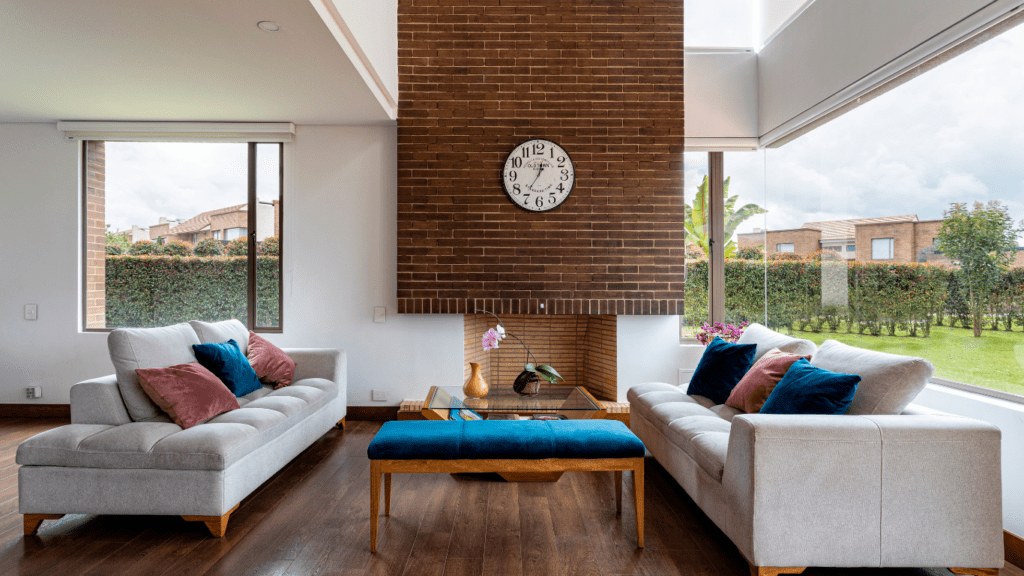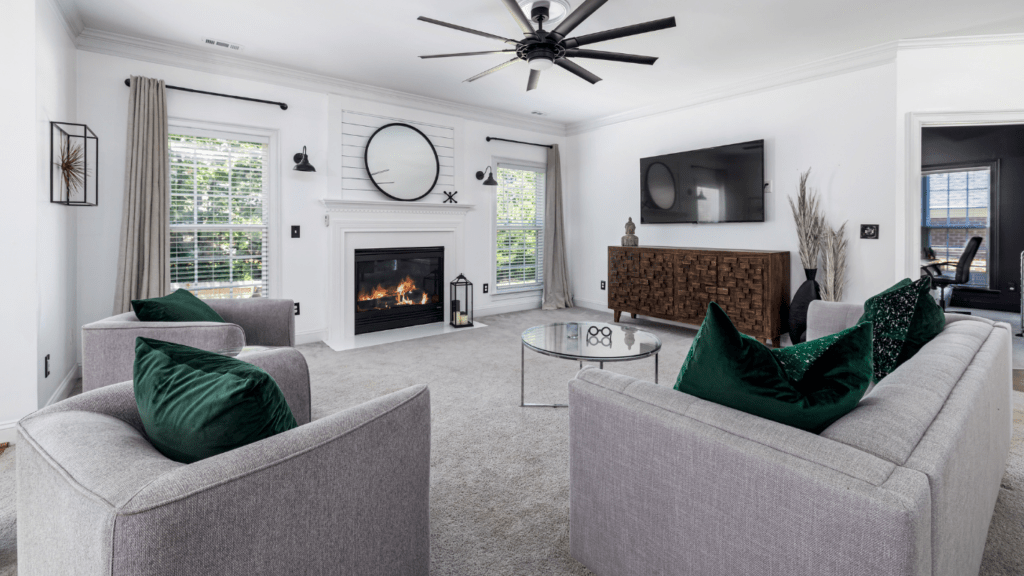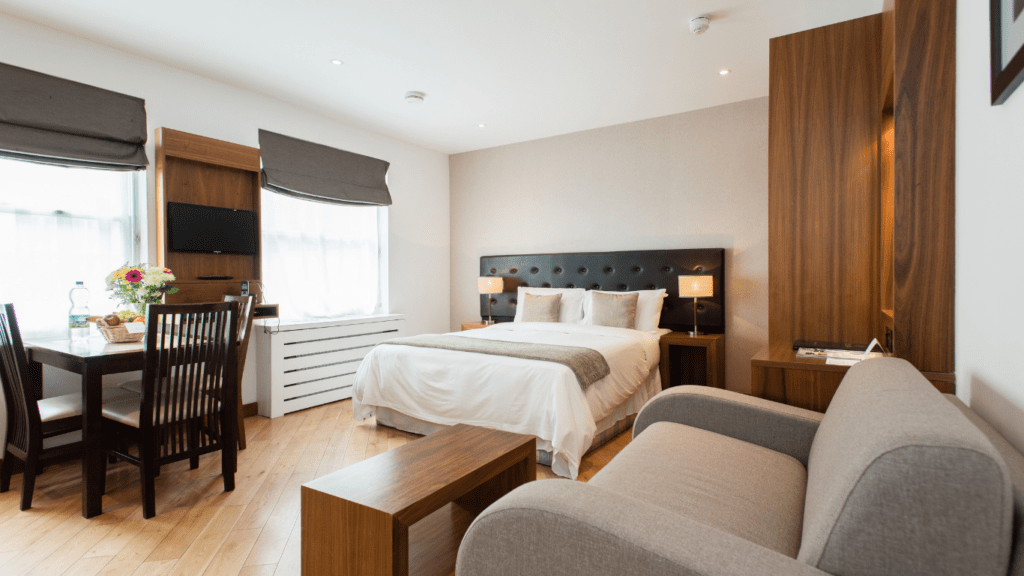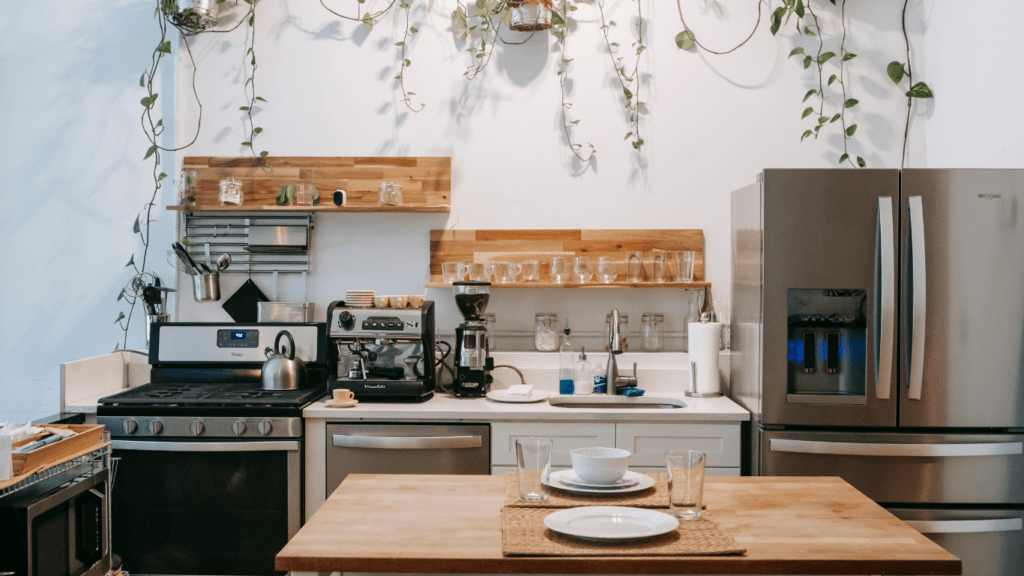Understanding Balance in Furniture Styling
Balance ensures a space feels cohesive and visually pleasing. Several types exist, each impacting design differently.
Types of Balance
- Symmetrical Balance: Symmetrical balance involves mirroring elements on either side of a central line. For example, placing identical chairs on both sides of a coffee table creates symmetry. This type of balance introduces formality and order in a room.
- Asymmetrical Balance: Asymmetrical balance distributes visual weight evenly without identical elements. For instance, balancing a large sofa with a group of smaller chairs creates harmony without uniformity. This approach injects a dynamic feel into the space.
- Radial Balance: Radial balance arranges elements around a central point. An example is positioning furniture in a circular pattern around a chandelier. This setup generates a focal point and a sense of movement.
- Color Distribution: Balancing colors across a room impacts visual harmony. Distribute hues evenly, such as placing colorful cushions on a neutral sofa and matching art pieces on the walls.
- Scale and Proportion: Ensure furniture and decor maintain appropriate scale and proportion. Pairing a large dining table with proportional chairs achieves visual equilibrium.
- Texture and Pattern: Mix textures and patterns while maintaining balance. Combining a smooth leather sofa with a textured wool rug adds depth, ensuring elements complement without overpowering.
- Negative Space: Incorporate negative space by allowing areas without furniture or decor. This technique prevents clutter and enhances the balance between filled and empty spaces.
Exploring Symmetry in Interior Design
Symmetry plays a crucial role in creating orderly and harmonious spaces. In interior design, it’s about balancing elements to achieve visual equilibrium.
Importance of Symmetry
Symmetry provides a sense of calm and stability. When elements mirror each other, the eye perceives balance, making the space feel more organized. For example, placing identical lamps on either side of a bed creates a symmetrical focal point, enhancing the room’s overall aesthetic.
Common Symmetry Techniques
Several techniques help achieve symmetry in interior design:
- Mirrored Arrangements: Placing identical furniture or decor items on either side of a centerline. For instance, you can position two matching chairs beside a fireplace.
- Central Focal Points: Using a central piece, like a large painting, and arranging elements symmetrically around it. Example: balancing a sofa with side tables and lamps on either end.
- Repetition of Patterns: Repeating the same pattern or color scheme on opposite sides of the room. Example: using matching curtains and cushions across the room to establish symmetry.
- Symmetrical Architecture: Utilizing architectural elements like windows or columns in symmetry. For instance, evenly spaced windows along a wall ensure structural balance.
By applying these techniques, I create balanced spaces that evoke a sense of order and tranquility.
Combining Balance and Symmetry

Combining balance and symmetry in furniture styling creates harmony and visual appeal. It ensures that a space feels both organized and inviting.
Practical Tips for Home Styling
- Create Focal Points: I arrange focal points, such as a fireplace or a piece of artwork, to ground the room. This helps in organizing furniture around this point for cohesiveness.
- Mirror Arrangements: Placing matching furniture, like armchairs or side tables, symmetrically across a central element enhances formality and order.
- Layer Patterns and Textures: I use varying patterns and textures to add depth and interest. Symmetry in repetition achieves a cohesive look while keeping it dynamic.
- Balance Colors: Distributing colors evenly, using accent pieces like throw pillows or rugs, prevents one side of the room from feeling heavier or more visually dominant.
- Vary Heights: Mixing furniture and decor items of differing heights avoids monotony. However, symmetrical pairs like identical lamps help maintain balance.
- Overcrowding: Filling a room with too much furniture disrupts balance. I ensure enough negative space to maintain flow and visual comfort.
- Ignoring Scale: Mismatched scales of furniture pieces can cause imbalance. Keeping proportionate sizes and shapes maintains harmony.
- Lack of Focal Point: Without a clear focal point, a room feels chaotic. Focal points, like statement art or a central table, anchor the design.
- Monotonous Designs: Relying solely on symmetry may make the space feel static. Incorporating asymmetrical elements, like varied textures, keeps it engaging.
- Color Clashes: Using too many contrasting colors disrupts harmony. Sticking to a coordinated palette aids in cohesive styling.
By applying these practical tips and avoiding common mistakes, anyone can master the fusion of balance and symmetry for an inviting and well-organized space.
Benefits of Balanced and Symmetrical Styling
Balanced and symmetrical furniture styling offers numerous advantages. These principles enhance both the aesthetic appeal and functionality of any space.
Enhanced Aesthetic Appeal
Symmetrical arrangements, such as pairs of chairs flanking a coffee table, create visual harmony. This balance fosters a calming environment, which many find appealing. Symmetrical layouts also appear orderly, suggesting tidiness and sophistication. An example is a mantel with identical candlesticks on both ends.
Improved Functionality
Balanced styling ensures that pieces don’t overcrowd or underutilize spaces. This results in efficient use of each area, making it practical for daily use. Placing storage units symmetrically can help evenly distribute weight and optimize access. For instance, setting bookshelves on either side of a study desk streamlines organization and accessibility.



 Betsylie Sheetsin – Home Renovation Expert
Betsylie Sheetsin serves as the Home Renovation Expert at Castle Shelf House, specializing in giving practical advice for both small and large-scale home improvements. With years of experience in construction and renovation, Betsylie understands the importance of blending durability with design. Her insights into home renovation projects, along with expert advice on the latest materials and techniques, empower homeowners to tackle even the most ambitious projects confidently.
Betsylie Sheetsin – Home Renovation Expert
Betsylie Sheetsin serves as the Home Renovation Expert at Castle Shelf House, specializing in giving practical advice for both small and large-scale home improvements. With years of experience in construction and renovation, Betsylie understands the importance of blending durability with design. Her insights into home renovation projects, along with expert advice on the latest materials and techniques, empower homeowners to tackle even the most ambitious projects confidently.
